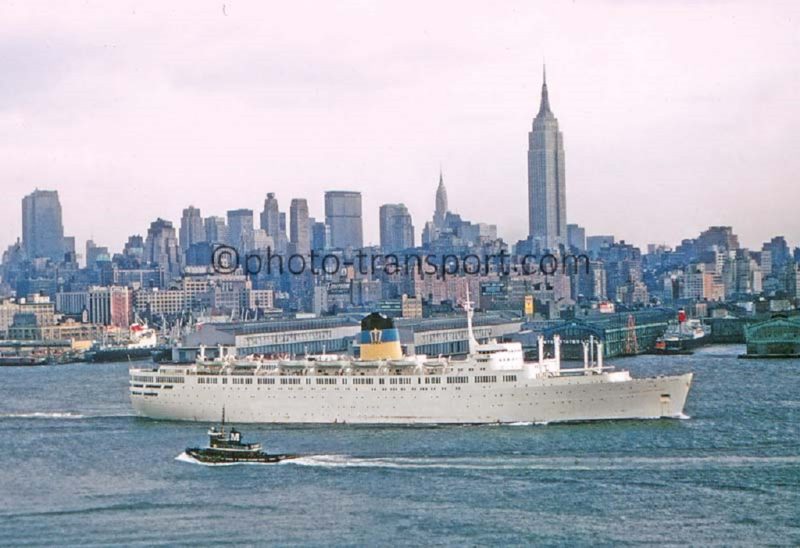
The National Greek Line was formed in 1909 by the Embiricos family, one of the two most important shipowning families from the island of Andros, the other being the Goulandris family. Leonidas A. Embiricos (1869-1948) was the eldest son of Andreas Embiricos and was born on Andros. He studied commercial sciences in Romania, and subsequently worked in the office of his uncle Alcibiades C. Embiricos, a grain merchant and shipowner in Braila. Leonidas started his shipowning activities in 1899 with his three brothers Antonios, Michael and Maris. He purchased second hand cargo ships and founded the Embiricos Brothers shipping and commercial empire. The National Steam Navigation Company of Greece, better known as the National Greek Line, was founded by Leonidas A. Embiricos and his three brothers in Piraeus.
NATIONAL GREEK LINE
Passenger services were to be operated from Piraeus to New York, with small feeder passenger ships bringing migrants from the Aegean islands to Piraeus. Syros of 1,821 grt built in 1893 by Earle’s yard at Hull as Chelmsford, and Andros of 2,068 grt built in 1914 by Sir Raylton Dixon at Middlesbrough, served the islands. Patris of 4,390 grt was the first Transatlantic service liner and had been newly built in 1909 by the Northumberland Shipbuilding Co. Ltd. at Howdon on Tyne and carried 1,300 migrants with the Greek blue and white flag proudly flying at her stern. She was sold by the company in 1925 to Messageries Maritimes of France and renamed Claude Chappe for a service from Saigon to Haiphong. Macedonia of 6,333 grt completed in 1911 was the second Transatlantic liner, but was converted into a Greek Navy cruiser a year later and sunk at Syros harbour, which was being shelled by an Ottoman naval cruiser.
During the years 1912 to 1914, the liner Ioannina of 4,167 grt was purchased as Arconia of 1896 from the Russian American Line, but was torpedoed and sunk off the Azores in 1917. Athinai of 6,742 grt and built in 1908, and Themistocles of 6,045 grt and built in 1907, were purchased from the Hellenic Transport Line of Dimitris Moraitis, who had set up a precursor Transatlantic line but had run into financial difficulties in 1914. Athinai carried both berthed and steerage passengers, but was destroyed by fire a year later in the North Atlantic on 19th September 1915, with Tuscania of Anchor Line rescuing all 339 passengers and 70 crew from the drifting liner in mid Atlantic. Themistocles carried on to give twenty years of service to the National Greek Line and was broken up in 1933. A further loss at the end of December 1915 was the liner Thessaloniki, built in 1889 by Workman, Clark at Belfast as City of Vienna for Ellerman Line, which suffered an engine breakdown 500 miles off Sandy Hook, New York, with her emigrants taken off by her consort Patris, and she was eventually scuttled 350 miles from the American coast on 15th January 1916.
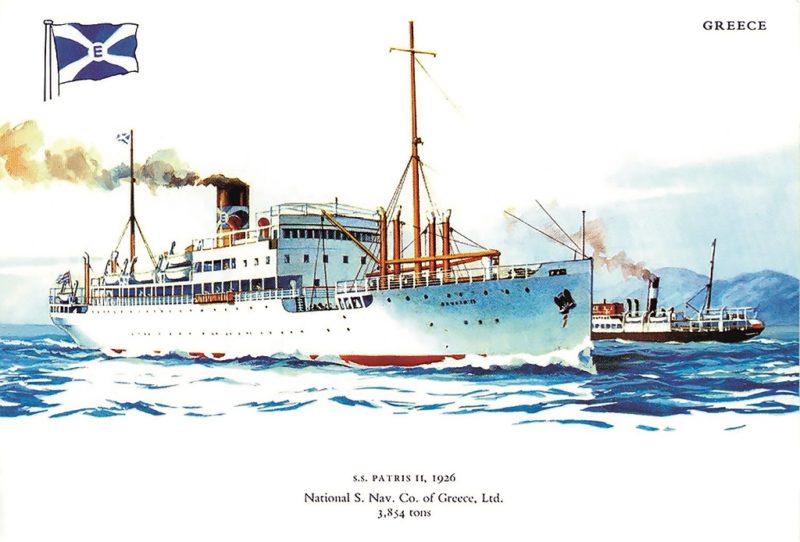
A twin funnelled liner of 9,272 grt had been launched in June 1914 by the Cammell, Laird yard at Birkenhead as Vasilefs Constantinos, but was not completed until after the end of the war. The name of the former King Constantine had become politically unacceptable as a result of his pro-German position during the war, which led to his abdication from the throne and replacement by his son Alexander. She was renamed Megali Hellas and was acquired in 1922 and renamed Byron for the Byron Steamship Co. Ltd. with a white hull under the British flag, the company had been set up by Leonidas A. Embiricos and his brother Michael in 1915. Byron had accommodation for 60 First Class passengers in two and four berth cabins, a large number of Second Class passengers, and 1,800 emigrants in steerage. She had stylish classic public rooms and a unique feature in a Greek church located on the shelter deck. She was transferred back to the Greek flag in 1928 and registered in Andros and served between Haifa, Piraeus, New York and Boston until broken up at La Spezia in early 1937. The setting up of the Byron Steamship Co. Ltd. had provided a base for operations in London, and also made it eligible to purchase a trio of seized German liners. Two further liners building in British yards during the war as Queen Sophia, sister of Vasilefs Constantinos, and Kilikia were not delivered to the company.
Three larger and faster former German prize liners were then purchased in the early 1920s to increase passenger capacity in the Hapag liner Cleveland of 16,960 grt in October 1920 and renamed King Alexander until sold to the United American Line in 1923. The North German Lloyd liner Bremen of 11,456 grt was built in 1896 and purchased in 1921 and renamed Constantinople, becoming King Alexander (2) in 1924. A sister from the North German Lloyd was purchased in 1924 as Koningin Louise, built in 1896, and was renamed Edison under the British flag until transferred to the Greek flag in 1928 and broken up in 1935. This trio of larger liners carried around 500 passengers in First and Second Class, and around 1,800 passengers in steerage. The National Greek Line owned fourteen passenger and cargo steamers in the early 1920s, with three tramps in the Embiricos Brothers fleet of up to 5,400 grt.
The Anchor Line of Glasgow sold their twin funnelled liner Columbia of 8,497 grt to the National Greek Line in 1926, and she was renamed Moreas under the British flag and transferred to the Greek flag in 1928, but was laid up and scrapped in the following year. She had accommodation for 563 passengers in First and Second Classes and 740 in Third Class. During the period from 1910 to 1925, the National Greek Line had carried 80% of Greek emigrants, and was so successful that it was able to double its initial share capital. However, U.S.A. immigration laws in the early 1920s had reduced the number of Third Class passengers, and as a result sailings had to be extended to Constantinople, Beirut and Alexandria to embark more passengers and with a call at Boston before New York.

A new liner Patris II of 3,854 grt was completed in January 1926 by Swan, Hunter & Wigham Richardson Ltd. at Wallsend on Tyne on dimensions of overall length 336.2 feet, moulded beam of 47.7 feet and moulded depth of 24.0 feet and a long bridge deck of 167.0 feet for service between Marseille, Genoa, Piraeus, Alexandria, Limassol and Beirut. She wore the National Greek Line funnel colours of yellow with a black top and a central blue band bearing a white cross with ‘E’ for Embiricos in the centre in blue. She carried 100 First Class, 150 Second Class and a number of deck passengers on her Mediterranean service, but her claim to fame was her stylish Art Deco public rooms and eight ‘de luxe’ First Class cabins. She was sold to Swedish Lloyd in 1935 and renamed Patricia for the London to Gothenburg express mail and passenger route, and then to the Swedish Navy in 1940 to begin a long career as a submarine depot ship.
However, the Depression in Greece had forced political upheaval and changes in the Greek Government, as well as a complete slump in the fortunes of the Embiricos family in 1933, with only one cargo ship left a year later in the fleet, and with the National Greek Line sailing only a final Transatlantic voyage in 1935, it was quickly forced into liquidation. A total of 1,500 seafarers and shore staff had been employed at the peak of its operations from an office in Plateia Karaiskaki in Piraeus. Leonidas A. Embiricos was a founder member of the Union of Greek Shipowners in 1916 and acted as its first President for four years until 1920. He relocated in the 1930s and lived the final years of his life in Paris, where he died in 1948. He had done everything he could to run a successful passenger line, including buying the Vassiliadis dry dock and repair yard in Piraeus to repair the vessels.
General cargo ships had also been owned by the National Steam Navigation Co. Ltd., including Frixos of 3,600 dwt torpedoed and lost in the North Atlantic in Spring 1917 with a cargo of wheat from New York to Manchester, and the three island type Meandros of 2,498 grt and 4,226 dwt, completed by the Woolston yard of John I. Thornycroft & Co. Ltd. in Southampton in November 1920 and sold after five years of service to Norwegian owners and renamed Nidarholm, and then to Nielsen & Thorden of the Helsingfors Steamships Company A/B of Finland without change of name.
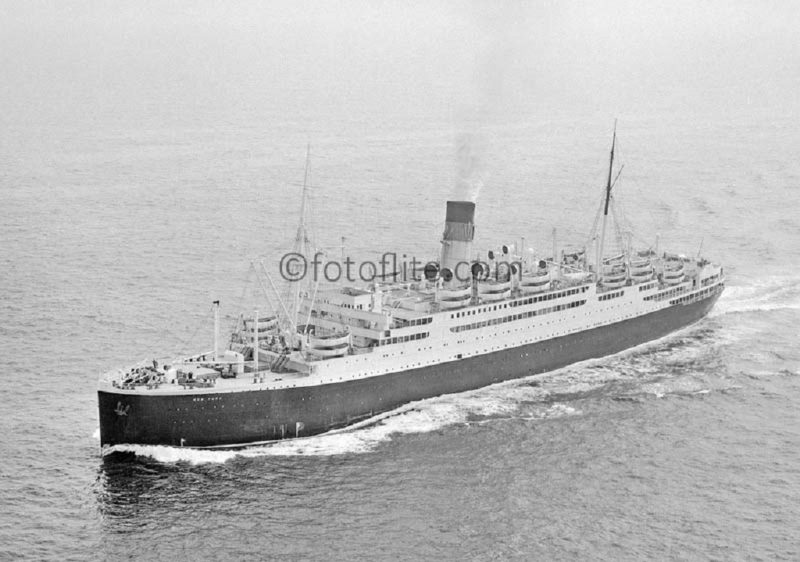
GOULANDRIS FAMILY and the GREEK LINE
The Goulandris family came from the same island of Andros as the Embiricos family, with Ioannis P. Goulandris (1840-1927) as the founding Master Mariner and owner of sailing ships in the second half of the 19th century. In the early 20th century, he became a minority partner in the tramp Cornilios until she was wrecked on 7th February 1910. In August 1910, he and his five sons Petros (1877-1931), Michael (1878-1935), Vassilios known as Basil (1886-1976), Nicholas (1891-1957) and Leonidas (1902-1952) began owning and managing the first two ships of a large fleet of tramp ships trading worldwide. A fleet of forty owned and managed tramps was being traded in early 1939, ten of which had the suffix ‘Goulandris’ to their names, with the remainder managed for their compatriots on Andros. On 19th April 1939, the passenger liner trades were entered jointly by Basil J. Goulandris, Nicholas J. Goulandris and Leonidas J. Goulandris with the formation of the General Steam Navigation Company of Greece, better known as Greek Line, to re-establish Transatlantic passenger sailings with the purchase of the passenger liner Tuscania of 16,991 grt from Anchor Line and renamed Nea Hellas and registered in Andros.
She had been completed at the Govan yard of the Fairfield Shipbuilding & Engineering Company in August 1922, and made her maiden voyage on 16th September 1922 from Glasgow to New York. She had accommodation for a total of 1,600 passengers and 350 crew, with a service speed of 16 knots powered by six steam turbines of 13,500 shp receiving steam from six boilers. She had 463,000 cubic feet of space for general cargo and 49,200 cubic feet of refrigerated space in her holds. She was chartered to Cunard Line in May 1926 and wore Cunard Line funnel livery, and made winter cruises from New York to Mediterranean ports and occasional sailings to Bombay during 1926/31. She was laid up in 1938 and made her fist sailing for Greek Line to New York from Piraeus on 19th May 1939 with accommodation for 200 Cabin Class, 400 Tourist Class, and 500 Third Class passengers.

Nea Hellas was returned to Anchor Line management shortly after Italy had invaded Greece and kept her new name. She was taken over for trooping duties in 1941 and was known as ‘Nellie Wallace’ to her crew and troops. She took part in the big convoy WS10 of eighteen ships including a dozen troopers to the Middle East in August 1941, her consorts being Britannic, Indrapoera (Dutch), Stirling Castle, Strathallan, Windsor Castle, Volendam, Cameronia, Highland Monarch, Orcades, Rangitiki and Reina del Pacifico. Nea Hellas was the first of eight passenger liners owned and operated by Greek Line.
GREEK LINE FLEET IN POST-WAR YEARS
NEA HELLAS
The end of the European War saw Nea Hellas still trooping for the victorious Allies until she was released from requisition in January 1947. She was returned to the Greek Line and refurbished at Genoa, as Greece had no yards with enough outfitting trades available for such extensive work. She emerged from her refit with good accommodation for 300 in First Class, 310 in Tourist Class, and 850 passengers in Third Class on her Piraeus to Malta, Naples, Genoa, Lisbon and New York service. She was overhauled again during 1954/55 and converted to a two class ship with accommodation for 80 First Class passengers and 1,369 in Tourist Class. She now had a new name of New York, and in April 1955 she was placed on the route from Bremerhaven to New York or Halifax (NS). She was laid up in a long line of ships at Perama on 14th November 1959, and sold for breaking up for £312,000 in Japan and arrived at Onomichi on 12th October 1961 to await the blowtorches of the scrapping squads.
COLUMBIA
She was built by Harland & Wolff Ltd. at Belfast as Katoomba in 1913 for the Sydney (NSW) to Melbourne and Fremantle service of McIlwraith McEacharn Line. She was of 9,424 grt and 6,765 dwt in four holds, two forward and two aft of 302,680 cubic feet capacity, with an awning deck and a third deck in number one hold below two shelterdecks. She had an overall length 466.0 feet, moulded beam of 60.3 and a moulded depth of 34.2 feet, and a draft of 27.0 feet, and had triple screws powered by twin quadruple expansion steam engines and a low pressure turbine to give a service speed of 16 knots. She had accommodation for 593 passengers and 170 crew, and her public rooms were in the ‘midships bridge deck of length 257.0 feet, and her ten lifeboats were double banked in Greek Line service under the flag of Panama. She had a refrigerated capacity of 8,700 cubic feet in her four holds.
She was the second largest Australian coastal passenger steamer and also operated one class Pacific cruises. She was requisitioned for troopship duty during World War II, but remained in Australian coastal waters. However, the cost of her post-war refit was too high for her owners, and she was sold to Greek Line in 1946 for Transatlantic passenger service from Piraeus to Genoa, Oran and New York. She was converted to oil firing in 1949 and renamed Columbia, and transferred to the Genoa to Australia route.
Unfortunately, she suffered two fires and a collision with the liner Homeric in fog in a five year period during her Greek Line career, and was withdrawn from service in December 1957 and broken up in Japan in 1959.
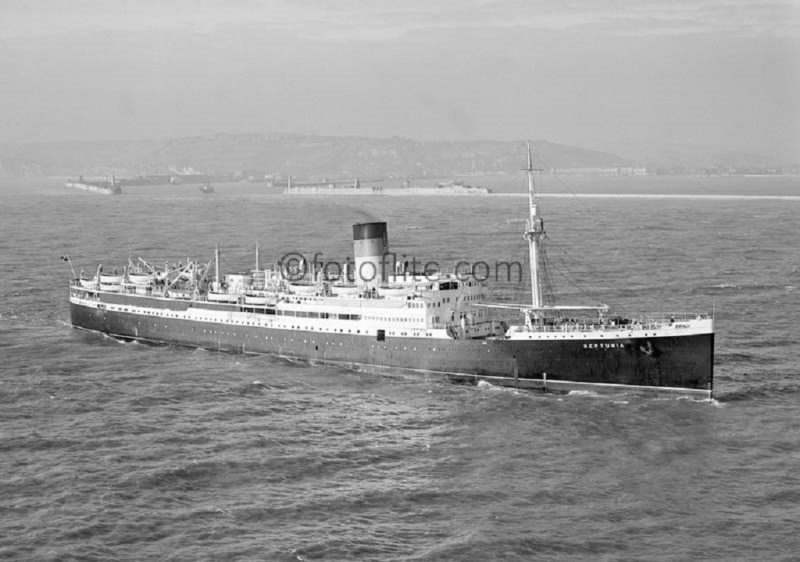
NEPTUNIA
The single funnelled Neptunia was built by the Nederland yard at Amsterdam in 1920 for Nederland Line as the twin funnelled Johan de Witt of 10,474 grt. She ran to the Dutch East Indies with accommodation for 300 passengers and 226 crew and had a service speed of 16 knots from twin triple expansion steam engines by Werkspoor of Amsterdam connected to twin screws. She could burn either coal or fuel oil in her boilers, bunker capacities being 1,560 tonnes of coal or 2,380 tonnes of oil. She had dimensions of overall length 506.0 feet, moulded beam of 59.0 feet, moulded depth of 35.0 feet and a loaded draft of 29.0 feet, with two decks and a shelter deck, and 256,000 cubic feet bale capacity and a refrigerated cargo capacity of 2,900 cubic feet in her holds. She was refitted in 1947 and her twin slender steam funnels were replaced with one wider funnel to give her a more pleasing appearance for Greek Line under the Panamanian flag as Neptunia. The Greek Line funnel colours were yellow with a black top and a central blue band bearing a yellow ‘crown’ device, but Neptunia gave only nine years of service to Greek Line and was withdrawn in 1957 after running aground near Cork.

CANBERRA
Canberra was built in 1913 by Alexander Stephen & Sons Ltd. at Linthouse on the Clyde for Australian Steamships Ltd. of Melbourne and ran on the Howard Smith service northward from Melbourne to Brisbane, Townsville and Cairns via Sydney (NSW). She was of 7,707 grt and 4,500 dwt with her four holds of 201,980 cubic feet capacity with two decks, a shelter deck and a shade deck. She had dimensions of overall length 410.0 feet, moulded beam of 57.7 feet and moulded depth of 38.4 feet, and a loaded draft of 23.7 feet. She was twin screw and powered by twin quadruple expansion steam engines receiving steam from six single ended boilers to make her the fastest passenger steamer on the Australian coast. She served as a troopship during both World Wars but was not considered worthy of refit in 1946 by her owners. She was sold in 1947 to Singapore Chinese interests and then witin a few months to Greek Line. She was given a major refit in 1949 including conversion to oil firing and began her service from Piraeus to New York. She sailed from Piraeus to Montreal in 1950 on transfer to a Canadian service starting in Bremerhaven and calling at Southampton, Cherbourg and Cork. She was sold in October 1954 and renamed Espana to carry emigrants and sugar from the Dominican Republic to Spain until broken up in 1959.
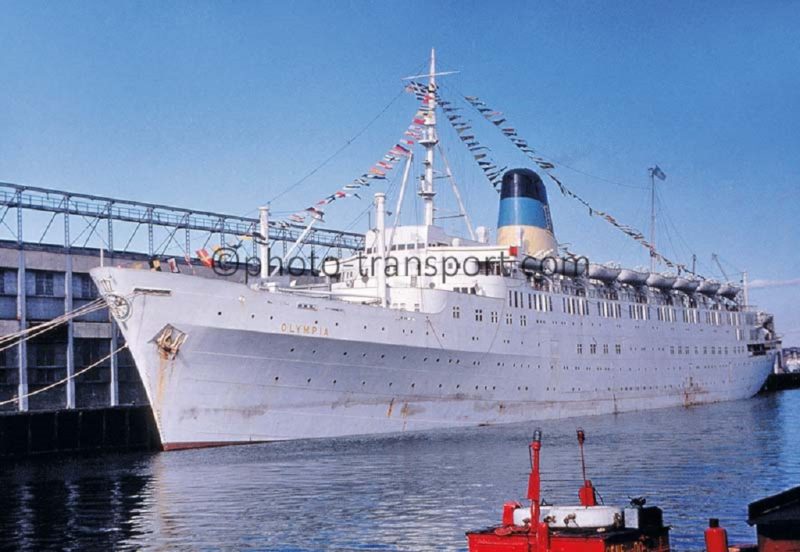

OLYMPIA
Olympia was the first and only purpose built liner for Greek Line in 1953, her builder being Alexander Stephen & Sons Ltd. of Linthouse on the Clyde. She was of 22,979 grt and had dimensions of overall length of 612.0 feet and moulded beam of 79.0 feet, and was powered by Parsons geared steam turbines of 25,000 shp connected to twin propellers to give a service speed of 21 knots and a maximum speed of 23 knots. She had accommodation for 138 in First Class and 1,169 Tourist Class passengers, and was launched at the Linthouse yard on the Clyde on 16th April 1953. She was registered in Liberia and sailed on her maiden voyage from Glasgow and Liverpool to New York on 15th October 1953, after having made a private shakedown cruise to Dublin.
She sailed for Greek Line from Piraeus to New York and also from Haifa after 1961, and in 1968 she was registered in Andros, the home island of the Goulandris family. She cruised exclusively for Greek Line from 1970 until she was laid up at Piraeus in late 1974. Olympia was later sold to Sally Shipping and her steam turbines were replaced with diesel engines in a refit that lasted until 1983, with her elegant steam funnel replaced by a latticework funnel. She returned to cruising under the name of Caribe 1 in 1983 for Commodore Cruise Line of the U.S.A. She was sold again to Regal Cruises of the U.S.A. and renamed Regal Princess, and gained her third funnel, this time a more pleasing modern funnel. She sailed for Imperial Majesty Cruise Line from Port Manatee near Tampa in the U.S. Gulf on the west coast of Florida, and replaced OceanBreeze, the former Southern Cross of Shaw, Savill & Albion Co. Ltd. She then operated overnight mini-cruises from Port Everglades to the Bahamas until she was broken up in January 2009.
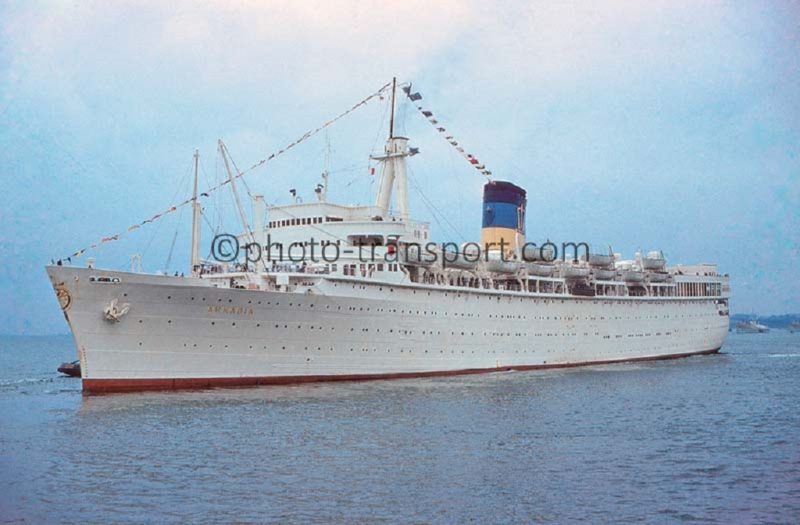
ARKADIA
Arkadia was completed as the liner Monarch of Bermuda by the Walker Naval Yard on the Tyne of Vickers Armstrong Ltd. in November 1931 for the New York to Bermuda route of Furness, Withy & Co. Ltd. She had dimensions of overall length 579.0 feet and moulded beam of 76.4 feet, and achieved over 21 knots on trials with a service speed of 20 knots from Fraser & Chalmers steam turbines of 20,000 shp connected to quadruple screws with generators by the General Electric Company. She had accommodation for 830 First Class passengers, of which 31 berths could be used as Second Class cabins, and a crew of 456. She was requisitioned as a troop transport in November 1939, and sailed in the first Commonwealth TC1 troop convoy and arrived in the Clyde on Christmas Day 1939 after a stormy crossing of 13 days, with a total of 7,400 troops of the Canadian 1st Division in six big troopers. She sailed in the NP1 troop convoy from the Clyde and Scapa Flow in April 1940, and also in the evacuation of troops from Norway in June 1940, and on convoys to the Middle East via Freetown and Cape Town, and on Operation Husky, the invasion of Sicily, on 10th July 1943 in company with 14 other troopers and four hospital ships.
She was gutted by fire at the Walker Naval Yard on 24th March 1947 during her renovation refit, and sailed from the Tyne in 1949 with a completely different profile. The three elegant red and black funnels were gone and replaced by a single funnel and a stump bipod mast on top of her bridge, which also acted as a funnel exhaust. She was renamed New Australia for the British emigrant trade to Australia of ‘Ten Pound Poms’, and was managed by Shaw, Savill & Albion Co. Ltd. from her first sailing on 15th August 1950. The emigrant trade tailed off to some extent in the late 1950s and she was sold to Greek Line and modernised by the Blohm & Voss yard in Hamburg, and renamed Arkadia for her first voyage from Bremerhaven to Montreal on 22nd May 1958. Arkadia had her passenger accommodation reconstructed in a further refit at the famous Blohm & Voss yard in 1961 to berth only 50 passengers in First Class with 1,337 in Tourist Class. She was sold by Greek Line at the end of the 1966 cruising season and arrived at Valencia for breaking up on 18th December 1966.
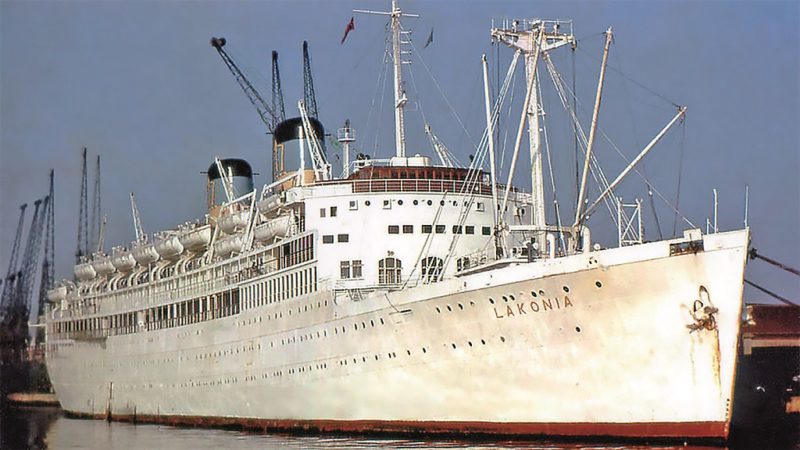
LAKONIA
Lakonia was built as the twin funnelled Johan van Oldenbarnevelt of 19,429 grt for Nederland Line by the Nederland shipyard at Amsterdam, and sailed in May 1930 on her maiden voyage from Amsterdam to the Dutch East Indies. She had dimensions of overall length 608.0 feet and moulded beam of 74.8 feet with a service speed of 17 knots and a maximum speed of 19 knots from Sulzer diesel engines of 14,000 bhp and twin screws. She had accommodation for 366 First Class passengers, 280 in Second Class, 64 in Third Class, and 60 in Fourth Class with a crew of 360. She made one voyage on charter to Holland America Line on 30th August 1939 and was then requisitioned as a troop transport for the Allies in 1940. She sailed in many famous Allied troop convoys during the war until released from naval service in October 1945.
She was overhauled at Amsterdam and re-entered service to the Dutch East Indies in late 1946, and to independent Indonesia from 1949. She also sailed onwards to Sydney (NSW) from September 1950, and was refitted for emigrant service to Australia in 1951 with accommodation for 1,414 one class passengers. She began to sail on a Round the World service from Amsterdam to Sydney (NSW), Panama Canal and New York returning to Amsterdam in April 1959. She was sold to Greek Line in 1962 with delivery in 1963 and an overhaul in Genoa to include modernisation of the passenger accommodation, and she was renamed Lakonia on 8th March 1963 for cruising from Southampton.
The loss by fire of the twin funnelled liner Lakonia that started to blaze around 150 nautical miles north of Porto Santo island near Madeira in late December 1963 is well remembered, as she had onboard over one thousand British cruise passengers. She was still recognisable as the former Dutch liner Johan van Oldenbarnevelt, built by the Nederland yard at Amsterdam in 1930, and after conversion into a cruise liner at Genoa in 1963 she was given a white hull and Greek Line funnel colours to begin cruising from Southampton to the Canary Islands. Late in the evening of 22nd December she caught fire, which very quickly spread over her entire hull, claiming 128 lives with the survivors taking to the boats. The Norwegian salvage tug Herkules took the burning ship in tow for Gibraltar two days later, but Lakonia heeled over and sank 250 nautical miles west of Gibraltar in position 35°56′ North, 10°00′ West on 29th December 1963.
QUEEN ANNA MARIA
She was completed as the Empress of Britain of 25,516 grt in March 1956 by the Fairfield yard at Govan on the Clyde on dimensions of overall length of 640.0 feet, moulded beam of 85.3 feet, moulded depth of 48.0 feet and a loaded draft of 29.0 feet. She had a service speed of 20 knots on the Canadian Pacific service from Liverpool to Montreal from Pametrada double reduction geared steam turbines constructed by her builders of 30,000 shp connected to twin screws. She had beautiful public rooms on her Promenade Deck with tall glazed windows to give an enclosed walkway to port and starboard, and accommodation for 160 First Class passengers and 894 in Tourist Class on decks ‘A’, ‘B’, ‘C’ and ‘D’ below. The crew accommodation for 464 persons was on ‘E’ deck, and she had six holds for cargo with twin hatches at number 5 hold for 9,400 tonnes of cargo. On 20th April 1956 she sailed on her maiden voyage to Montreal under the Canadian flag with a red and white chequerboard on her yellow funnel, and she had previously made two short shakedown cruises.
Empress of Britain was sold by Canadian Pacific Steamships in February 1964 to Greek Line and renamed Queen Anna Maria on 18th November 1964 with a 16 month refit following at the Mariotti yards in Genoa to emerge as a liner of 21,716 grt with accommodation for 168 First Class passengers and 1,145 Tourist Class passengers, although this was reduced to 741 while cruising. She made her maiden voyage for Greek Line on 24th March 1965 from Piraeus and Haifa to New York, and later spent many years cruising in company with Olympia in the Mediterranean and Caribbean between 1965 and late 1974, until Greek Line collapsed financially in early 1975. She was laid up at Piraeus on 22nd January 1975 until sold to Carnival Cruise Line owned by Ted Arison of Miami in December 1975. She was renamed Carnivale as the first Arison cruise ship to cruise in the Eastern and Western Caribbean, and became Fiesta Marina in 1993. She was sold to Epirotiki of Greece in 1994 and later cruised as Olympic and The Topaz for Royal Olympic Cruises Ltd. of Piraeus and Thomson Holidays Ltd. She ended up cruising for the Peace Boat organisation until she arrived at Alang in August 2008 to be broken up after a long career of 52 years.
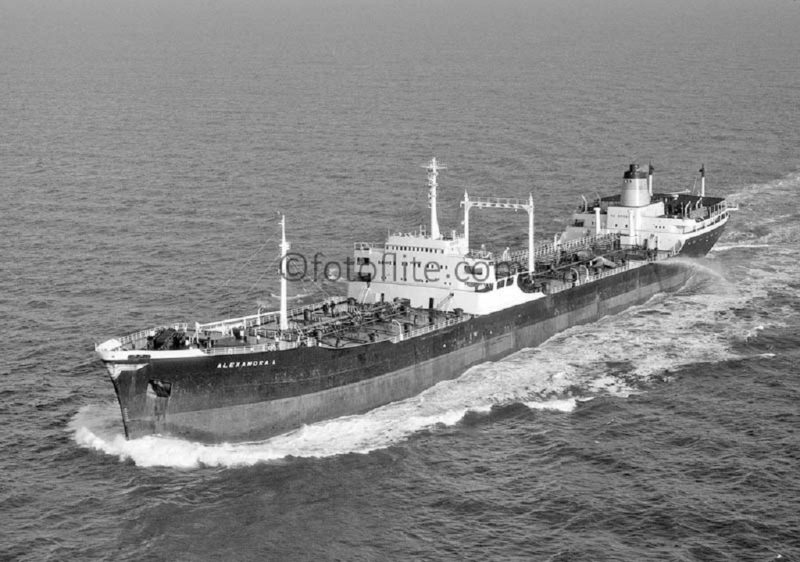
GOULANDRIS POST-WAR SHIPPING INTERESTS
Greek Line under Goulandris family ownership had finally given up in early 1975 after a financial collapse after 36 years of Transatlantic passenger carrying, and leisure cruising in the Mediterranean and Caribbean, as jet airliners had replaced passenger liners across the Atlantic and also offered alternative ‘fly cruises’ to the Caribbean. Tramping was not, however, given up by the Goulandris family in post-war years, the family having the biggest Greek tramping fleet of 1.4 million dwt in 1958 and in 1965, and were trading a big fleet of bulk carriers and tankers of up to 41,200 dwt with ‘Golden’ or ‘Grecian prefixes to their names under the parent company of Goulandris Brothers Ltd. The N. J. Goulandris Group was founded in 1953 by Nicholas J. Goulandris and became one of the most distinguished shipping empires that had emanated from the island of Andros in the Aegean.
At the beginning of 1952, an agreement was made by the three brothers that Leonidas Goulandris would manage the passenger ships of Greek Line, while Vassilios Goulandris and Nicholas Goulandris would look after the general cargo ship fleet. John and Constantine Goulandris, sons of Vassilios Goulandris, and Giannis, Alecos and Leonidas, sons of Nicholas Goulandris, and Giannis Goulandris, son of Leonidas Goulandris, were then allowed to gain experience in the shipping business with a view to eventually taking over the reins of management from their fathers. The first tanker Leonidas of 20,000 dwt was built in 1953 by the Nippon Kokan yard at Shimizu in Japan for the Miramonte Compania Naviera S.A., and was managed from the office of the newly formed Andriaki Shipping Co. Ltd. in Merarchias Street in Piraeus, with representation in London by the Goulandris office in Leadenhall Street. The Andriaki Shipping Co. Ltd. has since managed over one hundred vessels of all types, particularly tankers and bulkers for the Goulandris family.

In 1956, six new ships joined the N. J. Goulandris Group in the tankers Alexandra I and Marietta of 32,500 dwt, the general cargo ships Devon and Cornwall of 15,330 dwt, and the bulk carriers Aragon and Granada of 16,000 dwt, all from Japanese yards. The twin bulkers had five cargo holds with MacGregor steel hatch covers, and were of engines aft design completed by the Kawasaki Dockyard Co. Ltd. for the carriage of grain, ore, alumina and other bulk cargoes. A deck timber cargo could also be carried to a height of eight feet above the weather deck, and they had a high grain cubic capacity of 759,000 cubic feet. The holds had eight watertight bulkheads, cruiser stern, continuous double bottom, and two deep tanks for water ballast, fo’c’stle and poop erections, and fore and aft peaks. The rudder was of the partially balanced type incorporating a Kosta rudder bulb, and the rudder plate was of extra thickness for navigation in thick ice. A service speed of 14.5 knots was obtained from a double reduction impulse type steam turbine of 7,000 shp constructed by the builders. They had dimensions of overall length 528 feet, moulded beam of 68 feet, moulded depth of 41.5 feet, and a summer loaded draft of 29.1 feet, and were the first Greek bulk carriers of this size.
The tankers Marathon of 32,700 dwt, Castella of 32,900 dwt, and Anna of 40,900 dwt were delivered in 1957, as were the general cargo ships Navarino and Argyll. The sad passing of Nicholas J. Goulandris during the year was followed by his three sons and his daughter Anna continuing the management workload. The tankers Neapolis of 38,750 dwt and Violanda of 47,000 dwt and the general cargo ships Derby and Dorset were completed in 1958 in Japan, and the tanker Antipolis of 39,000 dwt, delivered in 1959, was the first ship of the Group to be registered in Andros.
The 1960s decade and the five years between 1970 and 1975 saw a big increase in the size of the fleet of the N. J. Goulandris Group, with the VLCC tankers Michael L. Goulandris and Nicholas J. Goulandris of 194,500 dwt in 1967/68 from the Hakodate Dockyard in Japan, and Violando N. Goulandris of 262,000 dwt in 1972 named after the wife of the founder of the Group. Bulk carriers continued to be delivered e.g. Messinia, Aetolia and Laconia of 22,000 dwt in 1960/61, Tokyo Olympics, Andros and Antigua of 25,300 dwt in 1964/65, standard ‘Hitachi 19’ and ‘Freedom Mark II’ types such as Alkyonia, Antiochia, Coronia, Orestia, Olynthia, Paralos, Pella, Pergamos and Panormos of 17,300 dwt to 19,000 dwt during the 1970s, Avlis and Sapporo Olympics of 28,500 dwt in 1972, Lokris of 29,100 dwt and Ariana of 41,900 dwt in 1973, and the ore oil carrier Caledonia of 58,900 dwt in 1967. The Neorion Shipyard on the idyllic island of Syros in the Aegean was purchased in the late 1960s, the historic yard had belonged for many years to shipowners Nicholas and Minas Rethymnis.
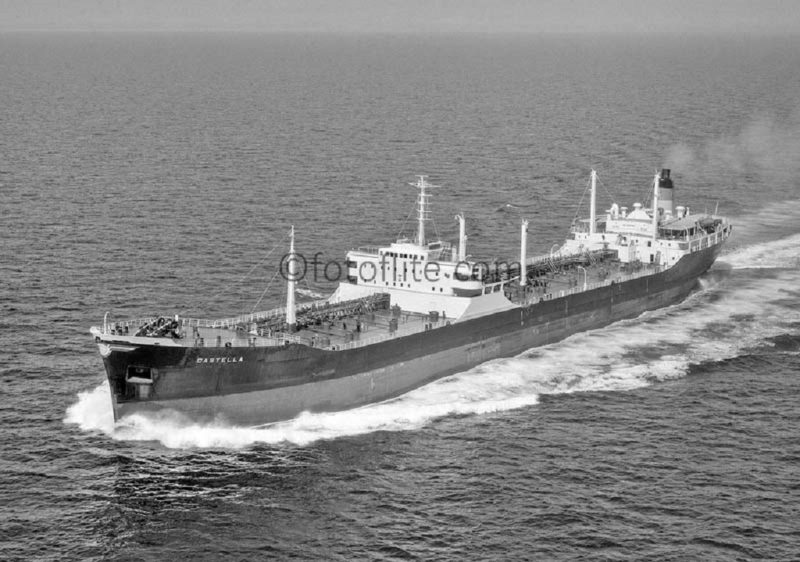
In 1975, a big fleet of sixty five tankers and bulkers was being managed by the Andriaki Shipping Co. Ltd., and was represented in the London markets by the St. Mary Axe and London Wall offices of Goulandris Brothers Ltd. and the N. J. Goulandris Group. Further additions were seven tankers and three bulk carriers completed by 1979, and the new tanker Ionia of 82,150 dwt was delivered in 1980 by the Hitachi yard at Hiroshima. The massive fall in freight rates in the early 1980s saw the Goulandris shipping empire adversely affected, as were shipowners all over the world. Nevertheless, three tankers of 60,500 dwt were delivered during 1981/83 as Antipolis, Neapolis and Nicopolis, and two Supramax bulkers of 65,000 dwt were delivered as Andros and Lamyra during 1983/85.
The N. J. Goulandris bulker fleet was further strengthened during the first five years of the 1990s by the purchase of four second hand Panamax bulkers. The new double hull tanker Venetia of 141,300 dwt was launched at Tsu in Japan on 25th March 1995 by the same Nippon Kokan yard that had built the first new tanker Leonidas in 1953. Venetia was the 61st new ship delivered by Japanese yards to the Group in 42 years, and was owned by the Andriaki Shipping Co. Ltd. of Athens along with the Supramax bulkers Andros and Heraklia of 65,000 dwt and the Handysize bulker Zeno of 43,000 dwt. The second hand Supramax bulker Amphion of 65,000 dwt was added to this fleet in 1999.
After the Millennium, the Goulandris Group was strengthened by two new VLCCs named Arion and Violando from the Samsung Heavy Industries yard in South Korea, and the bulker Aspendos from the Hyundai Samho yard in South Korea, and the second hand bulker Kronos by 2004. The Sasebo Heavy Industries yard delivered the tankers Ariana, Antipolis and Neapolis in 2005/06. Six Kamsarmax bulkers of 82,100 dwt were delivered during 2009/10 as Attalia, Andros, Kesaria, Myra, Pella and Tyana from the Tsuneishi Group yards in China and Japan. Four large Suezmax tankers at the upper range of Suezmax size of 164,000 dwt were delivered by the Hyundai Samho Heavy Industries yard during 2009/12 as Ephesos, Violando, Militos and Nicolaos, and a further VLCC of 318,352 dwt was delivered in 2009 as Leonidas by the Hyundai Heavy Industries yard at Ulsan.
The current Goulandris fleet in 2020 is managed by the Andriaki Shipping Co. Ltd. in the Marousi suburb of north east Athens, and comprises nine tankers in Ephesos, Violando, Militos and Nicolaos as well as the VLCC Leonidas mentioned above, and four more Aframax tankers of 74,000 dwt delivered between August 2017 and January 2018 by the Jinhae-Gu yard in South Korea as Antipolis, Nicopolis, Neapolis and Persepolis. The Goulandris fleet wear the traditional funnel colours of a yellow base, central blue band and a black top.
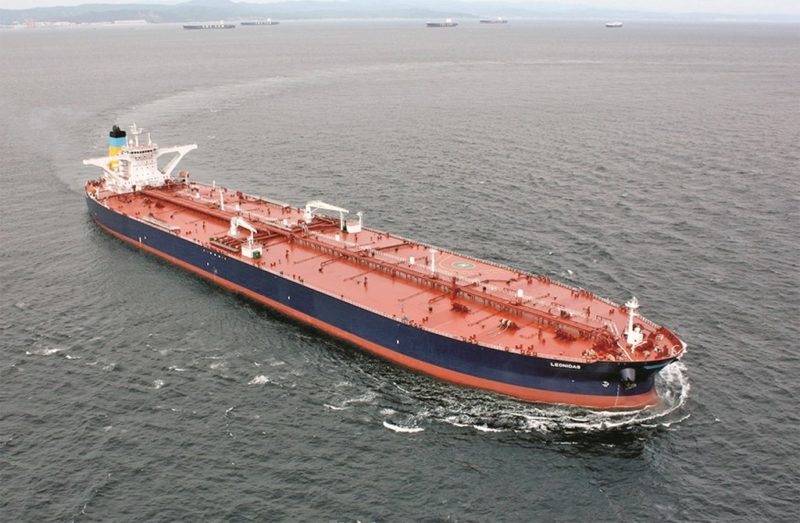
POSTSCRIPT
Handsome Greek Line liners such as Olympia and Queen Anna Maria, both of which I saw during their long careers, were the last pair of Greek Line managed Transatlantic passenger liners and cruise ships that were operated for 63 years. The Embiricos family of Andros managed the line from 1908 to 1935, and then their compatriots from the same island, the Goulandris family, managed the line between 1939 and its demise in 1975. These two Andros shipowners also managed much bigger fleets of general cargo ships, tankers and bulkers that have numbered in their hundreds of ships over a period of well over one hundred and fifty years, starting with sailing ships. This great achievement is reflected in the continuing descendants of the Goulandris family managing a fleet of very big tankers in 2020.
Stamatios G. Embiricos (1868-1934) belonged to a different clan of the Embiricos family and became famous in tramp shipping. He was born on the island of Andros and studied initially in Romania and subsequently at the Commercial School of Halki, and completed his education and shipping experience in London. He then worked at the merchant shipping office of his uncles Alcibiades C. Embiricos and Leonidas C. Embiricos in Braila in Romania. In 1896, he founded S. G. Embiricos Ltd. in Cardiff, which later moved to an office in London with also a branch office in Athens. He first purchased two second hand tramps, and in 1904 he acquired his first new tramp. He later founded a major coal importing company in Andros with his brother Aristides Embiricos, and he died on 6th September 1934 in Hamburg. The post-war tramp Stamatios G. Embiricos of 12,800 dwt was completed at the Pallion yard of William Doxford & Sons Ltd. in 1956 and named in his honour.
S.G. Embiricos of Vissarionas Street in Athens was managing a big fleet in 1975 of 17 general cargo ships, tankers and bulkers of up to 40,000 dwt, including Eugenie S. Embiricos of 13,110 dwt, George S. Embiricos of 32,388 dwt, Nicolaos S. Embiricos of 13,300 dwt, the tanker S. G. Embiricos of 29,732 dwt, and Stamatios G. Embiricos of 12,800 dwt. This fleet, managed by the Aeolos Management S. A. in Athens, in 1999 had the same number of ships as in 1975, all named after Greek islands in the Aegean, but their size had increased massively, with eight VLCCs of up to 328,500 dwt.
Epaminondos Embiricos was named Greek Shipping Personality of the Year by the Lloyd’s List Greek Shipping Awards in 2010, his son George Embiricos accepted the award as he had recently stepped down from the company. The Embiricos Group in 2020 took delivery of a VLCC of 318,000 dwt from the Daewoo Shipbuilding & Marine Engineering (DSME) yard in South Korea costing around $84 million.

I wish to thank the excellent articles by the Greek Shipping Hall of Fame for the histories of these two great families, Embiricos and Goulandris, from the island of Andros, and also thank the excellent website of the fleet of the current Goulandris family at www.andriaki.com.
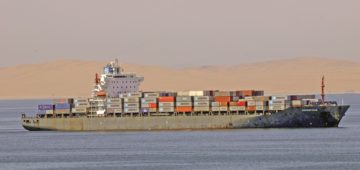



Comments
Sorry, comments are closed for this item